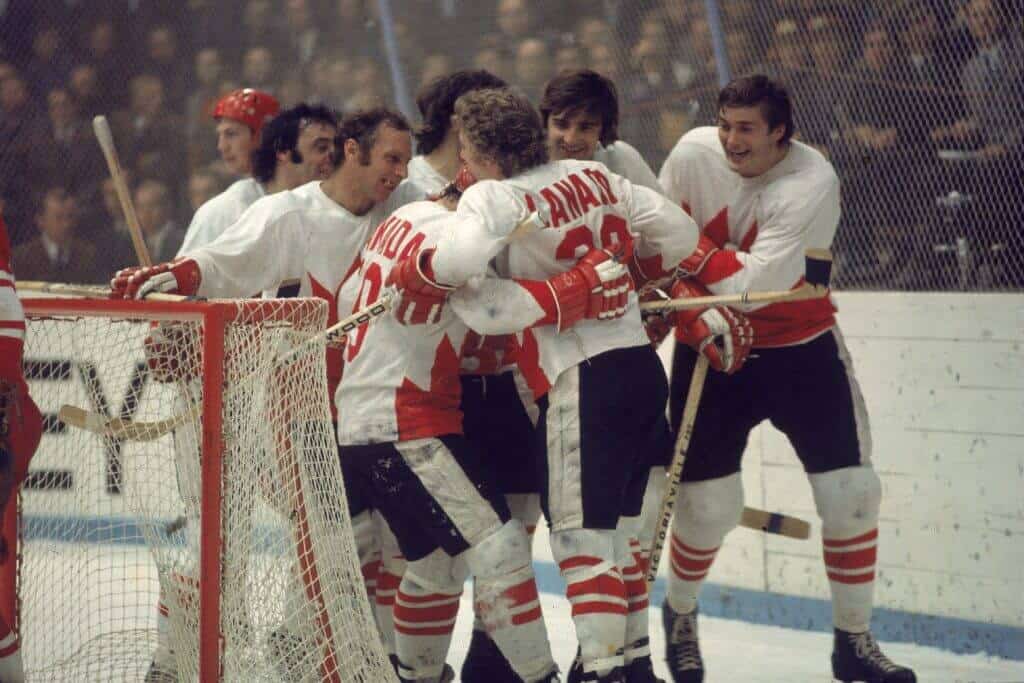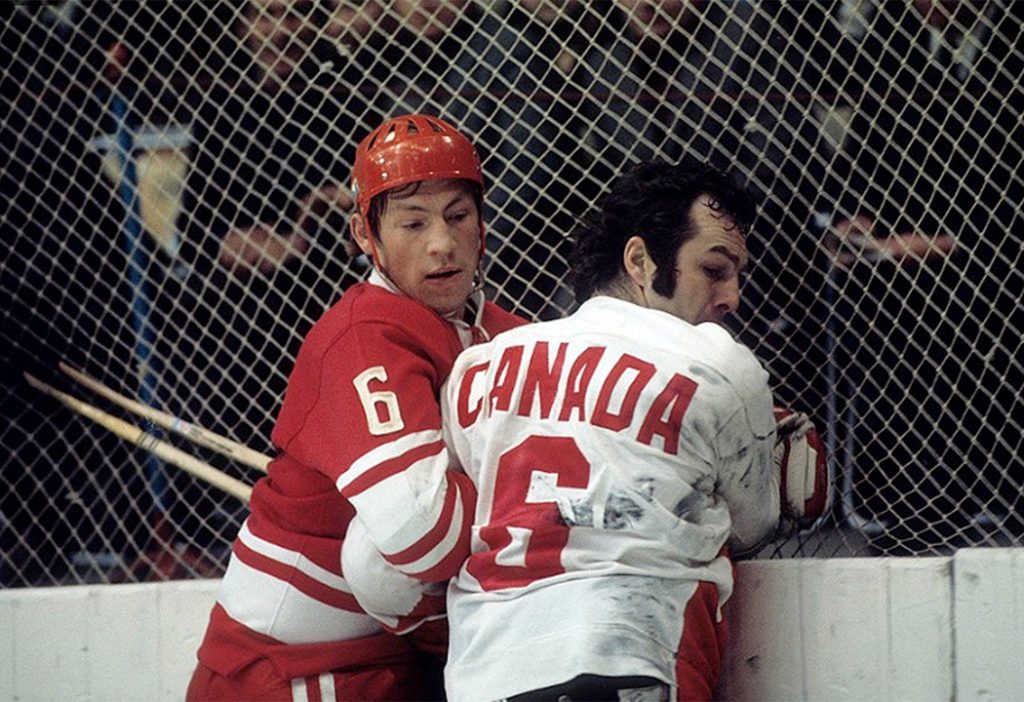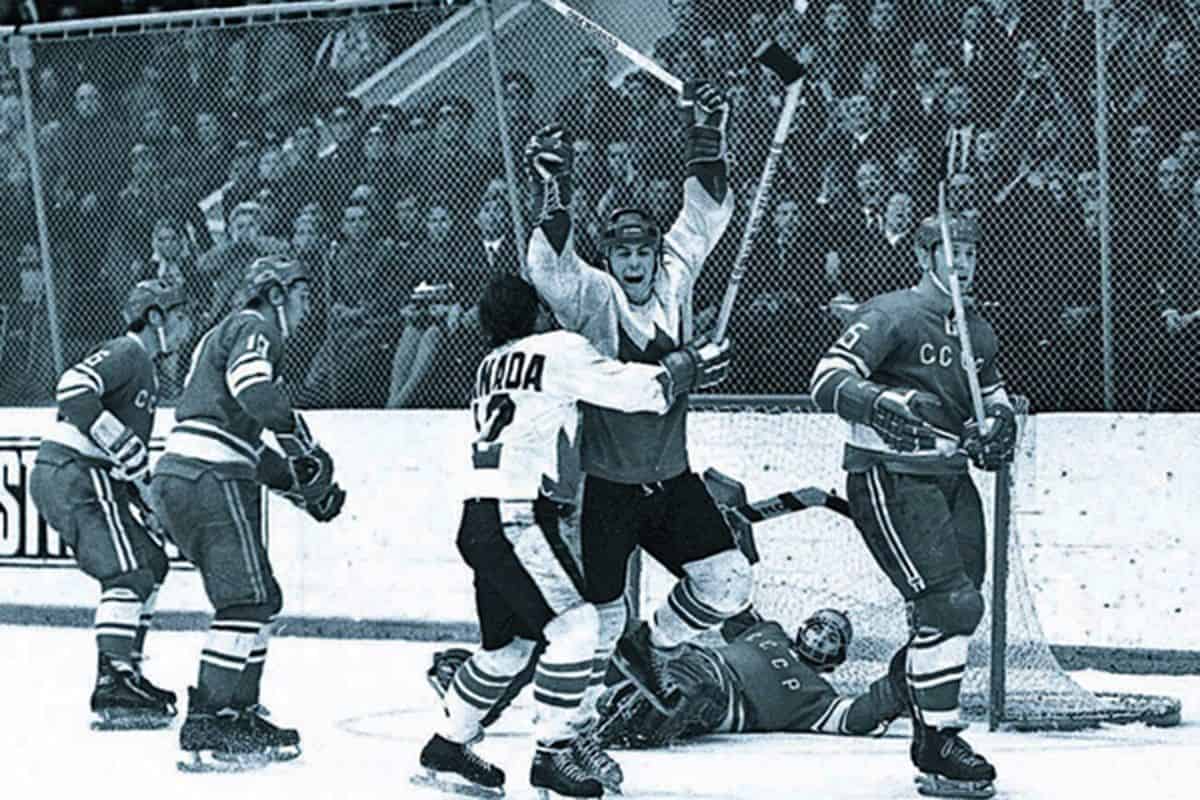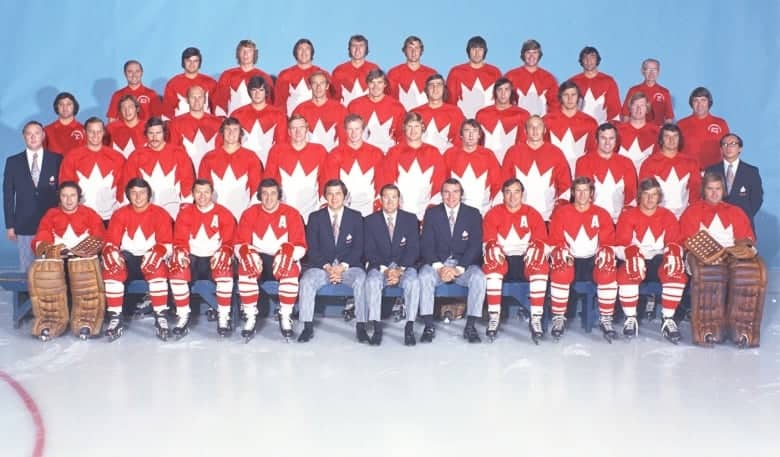Memories of ’72, junior high in Toronto and the Summit Series
Published September 28, 2022 at 1:17 pm

Fifty years ago today those of a certain vintage will remember where they were when Paul Henderson scored the most famous goal in Canadian hockey history. Those of us of that vintage will also have no problems calling it the greatest sporting moment in our lives and indeed, Canadian sporting history.
Those of us who are not of that vintage will roll their eyes with a dismissive “okay, Boomer” and point to Sid’s golden goal in Vancouver in 2010, or Donovan’s sprint in Atlanta in ’96 or maybe Penny’s performance in Rio in 2016.
I say, with all due respect to the young ‘uns, they’re wrong.
Outside of war, there had never been anything like the Summit Series before that gripped the nation like those eight games in September of 1972 and there has not been anything like it since. It was a different time, and we were in the midst of a Cold War, so there was definitely a bit of us-against-them mentality going on, even to the naïve mind of 12 year-old (going on 13, I would have said at the time) me.
There was also plenty of national pride and ego going on. Hockey was OUR game and we were the best by a country mile in the sport (or so we thought) and if we were getting spanked at Olympic Games and the like it was only because they wouldn’t let the professionals from the NHL into the party.
Wait until our best show up, we all thought. The Russians (we never called them Soviets) won’t stand a chance.
It was also a truly horrible period of my life at the time: puberty is rough on many people but was especially tough on a shy small and scared kid thrust from my Beaver Cleaver elementary school neighbourhood to the ‘mean streets’ of Downsview in suburban Toronto.
This series and the universal excitement it brought was all I had, and it gave me something in common with the cool kids and the tough kids and every other kid who never acknowledged my existence.

Ron Ellis. My childhood hero
My favourite player even made Team Canada and for once I didn’t feel like Charlie Brown and his hero worship of the fictional Joe Shlabotnik, who once hit .004 over an entire season. Ron Ellis was real, man, and was good enough to play on the top line. I felt vindicated.
The series coincided with the beginning of the school year and we all shouted “Go Canada Go’ together as Game 1 appeared and then, quicker than you could say Yakushev, all that bravado disappeared in Montreal with Russia’s 7-3 crushing of our boys.
The country, though, became united and if some of the adults were calling the players bums I don’t remember any of that at my school. We knew they would find a way.
We won Game 2 in Toronto but a tie in Winnipeg and a devastating loss in Vancouver put us – without question it was ‘us’ – in a bit of predicament. We could afford only one more loss. The series, and our presumptive place at the top of the hockey world, was in serious jeopardy.
So of course Game 5, the first game in Moscow, went to the enemy and Canada was now down 3-1-1. We needed to win out to take the series and restore our national pride.
Hollywood couldn’t have scripted it better.
That’s when the secret weapon was brought out: the nation’s schoolchildren. In classrooms around the country those televisions on the huge stands normally reserved for boring documentaries on the history of the typewriter or how corrugated boxes were made were wheeled out to classrooms and auditoriums and book-learning stopped for the mid-day (our time) games.
Was this the magic the players needed? We’ll never know, but Dennis Hull, Yvan Cournoyer and Henderson scored in Game 6, Bobby Clarke broke Valeri Kharlamov’s ankle with a nasty slash and Team Canada won 3-2. Two nights later Canada scored a comeback 4-3 victory to square up the series with Phil Esposito scoring twice and Rod Gilbert and Henderson (once again with the winning goal) adding singles.
The entire nation stopped for Game 8 and the administration at Beverley Heights Junior High School stepped up their game by inviting the entire school – a few took advantage and skipped, but the number was surprisingly low – down to the auditorium to watch the final game.
This would be the most watched television event in Canadian history and it’s worth mentioning that most of us were watching on black and white TVs as well.
So primitive we were, but at the time I could tell you we didn’t care. The game was on and we were watching it.
It turned out to be a game for the ages for Phil Esposito, who had four points and a hand in all three of Canada’s third period goals. General manager Harry Sinden said it was his finest hour and according to Ellis, who had three assists in the series playing a mostly defensive role, he had “never seen another player have a period where there was so much pressure and was still able to accomplish what he did.”
But when it came down to it, it was Henderson who became the hero and entered Canadian hockey lore. After starting the third period down 5-3, Esposito scored his second of the game and Cournoyer tied it up, setting the stage for Henderson’s heroics.

The most famous goal in Canadian sports history. Every kid had this picture on their wall growing up. I still have one
I’ll let broadcaster Foster Hewitt call this one: “Here’s a shot. Henderson makes a wild stab for it and fell. Here’s another shot. Right in front. They score! Henderson has scored for Canada!”
The kids in the auditorium went crazy. Sixteen million Canadians – nearly three-quarters of the population at the time – went nuts. And we all breathed a collective sigh of joy and relief. We were the best at hockey; we knew it all along.
When the plane carrying the players touched down in Toronto (after dropping off the Montreal-based players first), 80,000 fans came out to greet them at Nathan Phillips Square. And the day after that I was back in junior high, still the same small, shy, scared kid coming to grips with puberty and my own social anxieties.
But for a month in September of 1972, I was cool. Just like everybody else.







